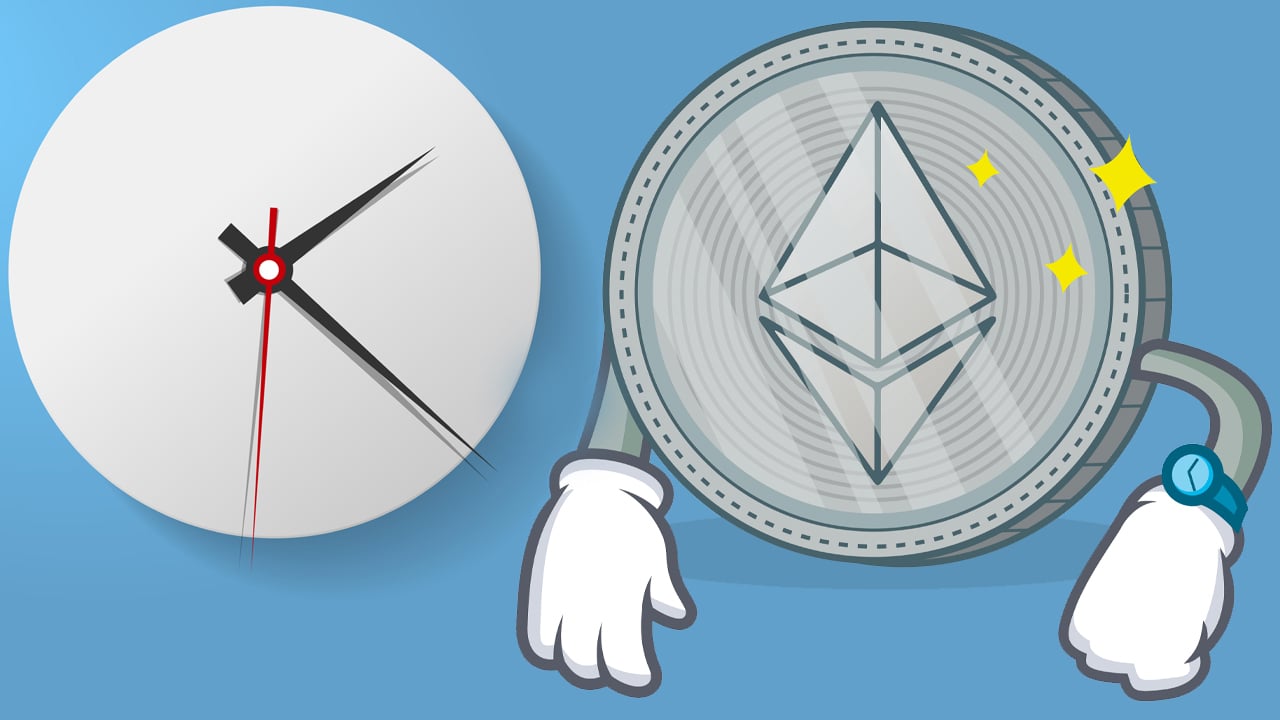
Holding gains above $1,750 remains a challenge for ETH, but derivatives data shows traders believe future downside moves will be limited to the most immediate price support.
The price of Ether (ETH) declined 9.8% between Feb. 19 and Feb. 25 after the price resistance at $1,725 proved stronger than expected. Still, the correction was insufficient to break the 6-week-long ascending channel and did not cause Ether derivatives metrics to turn bearish.

Ether's price resilience can be partially explained by the operational failure of some of its smart contract blockchain competitors. For instance, Solana (SOL) faced a 20-hour-long outage on Feb. 25, which was only resolved after a network upgrade coordinated by validators. The network restart also involved purging some of the latest slots, although Solana developers said that "no confirmed user transactions were rolled back or impacted."
NEM (XEM) experienced a "chain halt" on Feb. 27 that lasted for 15 hours, causing multiple exchanges to halt deposits and withdrawals and developers promised to release an update to prevent further misbehavior. Curiously, the latest post from the official NEM account on Twitter, excluding a Merry Christmas greeting, was a "Please Stand By" image posted in July 2022.
The regulatory environment remains shady for cryptocurrencies, and the latest victims were global payment processing companies Visa and Mastercard. According to a Reuters report published on Feb. 28, the firms are delaying the launch of new partnerships with crypto firms until market conditions improve and a more transparent regulatory framework is established.
In more positive news, Ethereum's Sepolia testnet was successfully hard forked on Feb. 28 in preparation for the Shanghai upgrade. The much-anticipated mainnet update expected for March should finally allow validators to withdraw their staked Ether from the Beacon Chain. Developers are now prepping the Goerli testnet to enter a similar stage.
Let's look at Ether derivatives data to understand if the $1,560 support retest on Feb. 25 has impacted crypto investors' sentiment.
The annualized two-month futures premium should trade between 5% and 10% in healthy markets to cover costs and associated risks. However, when the contract trades at a discount (backwardation) versus traditional spot markets, it shows a lack of confidence from traders and is deemed a bearish indicator.

The chart above shows that derivatives traders became slightly bullish as the Ether futures premium (on average) flirted with the 5% threshold on Feb. 26. More importantly, it shows resilience even as Ether price declined by nearly 10% between Feb. 19 and Feb. 25.
The increased demand for leverage longs (bulls) does not necessarily translate to an expectation of positive price action. Consequently, traders should analyze Ether's options markets to understand how whales and market makers are pricing the odds of future price movements.
The 25% delta skew is a telling sign when market makers and arbitrage desks are overcharging for upside or downside protection.
In bear markets, options investors give higher odds for a price dump, causing the skew indicator to rise above 10%. On the other hand, bullish markets tend to drive the skew metric below -10%, meaning the bearish put options are in less demand.
Related: Vitalik Buterin says 'more still needs to be done' over high Ethereum txn fees

The delta skew flirted with the bearish 9% level on Feb. 27, signaling stress from professional traders. However, the situation improved on Feb. 28 as the index moved to 5 — indicating a similar upside and downside risk appetite.
It makes sense for fundamental analysts to avoid adding bullish positions ahead of the Shanghai upgrade, especially since Ethereum developers have a history of delaying significant network changes.
Despite the range of concerning factors, options and futures markets signal that pro traders are conservatively bullish and trust that the ascending pattern will hold. From a technical analysis standpoint, investors appear to believe that the bullish trend will continue unless Ether breaks below the channel support at $1,520.
This article does not contain investment advice or recommendations. Every investment and trading move involves risk, and readers should conduct their own research when making a decision.
The views, thoughts and opinions expressed here are the authors’ alone and do not necessarily reflect or represent the views and opinions of Cointelegraph.
 Ethereum core developers plan to activate the “Shapella” transition through the Zhejiang public testnet on Feb. 7, 2023, according to Tim Beiko of the Ethereum Foundation. If successful, Beiko said the Sepolia testnet could follow two days later, followed by the Goerli testnet. He noted that the testnet has a faucet, block explorer, and staking […]
Ethereum core developers plan to activate the “Shapella” transition through the Zhejiang public testnet on Feb. 7, 2023, according to Tim Beiko of the Ethereum Foundation. If successful, Beiko said the Sepolia testnet could follow two days later, followed by the Goerli testnet. He noted that the testnet has a faucet, block explorer, and staking […] In 23 days the Ethereum network will transition to a proof-of-stake (PoS) consensus algorithm after operating as a proof-of-work (PoW) blockchain since July 30, 2015. While the change may not mean much to ethereum users and traders, what’s changing under the hood is a very big deal. You’ve Heard About The Merge, Why Is It […]
In 23 days the Ethereum network will transition to a proof-of-stake (PoS) consensus algorithm after operating as a proof-of-work (PoW) blockchain since July 30, 2015. While the change may not mean much to ethereum users and traders, what’s changing under the hood is a very big deal. You’ve Heard About The Merge, Why Is It […] While there’s 50 days left until the week of September 19, the crypto community has been discussing whether or not Ethereum developers will delay the penciled-in date for The Merge. Moreover, on July 27, the crypto hedge fund Galois Capital published a survey on Twitter that indicates more than 33% of the survey’s respondents think […]
While there’s 50 days left until the week of September 19, the crypto community has been discussing whether or not Ethereum developers will delay the penciled-in date for The Merge. Moreover, on July 27, the crypto hedge fund Galois Capital published a survey on Twitter that indicates more than 33% of the survey’s respondents think […]
Merge trials on testnets are essential to allow Ethereum developers and independent project developers to understand what they can expect when the actual Merge takes place.
Ethereum has now completed its second-to-last major Merge trial on the public test network Sepolia, paving the way for its transition to the proof-of-stake (PoS) consensus mechanism.
While it's been judged mostly a success, it was not incident free.
The final trial of the Merge is set to occur on the Goerli network over the next few weeks before the official Merge on the Ethereum mainnet can be given the go ahead.
Ethereum educator Anthony Sassano, who hosted the Sepolia Merge livestream on YouTube on July 6, confirmed on Twitter that the Merge transition went through "successfully" and added that testnet will be monitored over the next few days.
Thanks to everyone who watched the Sepolia merge livestream!!
— sassal.eth (@sassal0x) July 6, 2022
The Sepolia merge transition went through successfully (and the chain finalized!) so now it's time for monitoring over the next few days.
Then we merge Goerli...
...then mainnet
The Merge is coming
Terence Tsao, an Ethereum protocol developer also said the Merge transition itself had been a success, but noted around 25-30% of validators went offline after the Merge due to “wrong configs.” However he added that “hiccups will not delay the Merge.”
Sepolia summary:
— terence.eth (@terencechain) July 6, 2022
- Merge transition itself was a success
- 25-30% of the validators went offline shortly after the merge
- The offline validators were due to wrong configs
- Since then, the offline parties have updated their configs, and validators are up
(cont)
Superphiz, a founding member of the ETHStaker Community cautioned during the stream however that the actual success of the Merge won’t be known “for several hours or even until tomorrow.”
The final trial will occur on the Goerli test network. Superphiz added that the timing of the Merge will depend on the reviews of the Sepolia test.
The testnet Merges are a form of “dress rehearsal” that are essential to allow Ethereum developers and independent project developers to understand what they can expect when the actual Merge takes place.
During the livestream, Ethereum co-founder Vitalik Buterin admitted that one of the challenges facing the main network Merge will include “much more third-party infrastructure that isn’t present on the testnets.”
Related: Ethereum Name Service registrations surge by 200% amid lower gas fees
“So there might be non-critical issues like that that will just pop up in the Merge that we're not catching with these tests [...] There’s a lot of peripherals that are just not getting tested and that’s unavoidable and probably fine.”
Despite the news, Santiment has warned of a potential ETH sell-off with total ETH supply on exchanges reaching a new high of 13.8% on July 4, the highest since January 3, 2022.
#Ethereum's price has rebounded mildly to ~$1,120 on America's birthday. This said, $ETH continues to move rapidly back on to exchanges and is close to breaking 2022 highs. There is higher risk of a selloff while coins are rising on exchange wallets. https://t.co/kJFZNCXV54 pic.twitter.com/JcmrHp80VK
— Santiment (@santimentfeed) July 4, 2022
As of July 7, the percentage has declined slightly with around 13.25% of the total ETH supply sitting on exchanges.
The price of Ethereum (ETH) is currently at $1,186 at the time of writing.